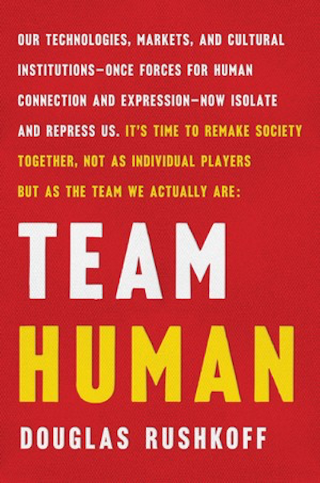# Altruism: The Key to Human Evolution and Cooperation
Written on
Chapter 1: The Roots of Altruism
Altruism has been a fundamental aspect of what it means to be human. Contrary to the beliefs of some theorists, our inclination to help one another isn’t merely a strategy for future gain.

Photo: Klaus Vedfelt/Getty Images
Through natural social mechanisms, we developed the ability to bond with partners, share resources, and engage in collective child-rearing. Our chances of survival improved as we learned to divide tasks and trust each other to fulfill them effectively.
The true milestone in our evolution was not simply the division of labor, but the establishment of group sharing. This unique trait set humans apart from other hominids: we would wait to consume food until it was safely brought back to our communities. Our identity as humans is less about superior hunting skills and more about our unique abilities to communicate, build trust, and share resources.
Biologists and economists have historically dismissed social or ethical explanations for altruistic behavior, attributing it instead to a concept known as “reciprocal altruism.” This theory suggests that individuals perform acts of kindness with the expectation of receiving something in return later. For example, one might risk their safety to save another's child from danger, trusting that the other parent would reciprocate the favor. In this perspective, altruism is seen as a complex form of self-interest rather than genuine kindness.
However, modern studies increasingly support the idea that altruistic behavior stems from more noble intentions, independent of self-serving motives. Early humans exhibited a strong tendency to collaborate, often at significant personal risk, even when no reward was anticipated. Those who broke the established norms of cooperation faced consequences, indicating that community and solidarity were valued in their own right.
A pivotal development in this process was the advent of spoken language. This adaptation was fraught with risk, as it required combining the airway with the food passage, increasing the chance of choking. Nevertheless, this capability allowed for the modification of sounds produced by our vocal cords, creating the diverse range of noises needed for effective communication.
While the evolution of language may have been driven by the necessity for more complex social structures, it also represents a monumental collaborative effort among early speakers. This multigenerational project profoundly influenced societal structures and reinforced the belief in cooperation.
This excerpt is from section 12 of the new book Team Human by Douglas Rushkoff, serialized weekly on Medium. You can read the previous section here and the following section here.

Chapter 2: The Evolution of Altruism
In the video "How Altruism Evolved in Humans," the discussion centers on the biological and social mechanisms that foster altruistic behavior among humans, delving into the evolutionary advantages of cooperation.
The second video, "Why some people are more altruistic than others | Abigail Marsh," explores the psychological factors that differentiate levels of altruism among individuals and the implications for social bonding.